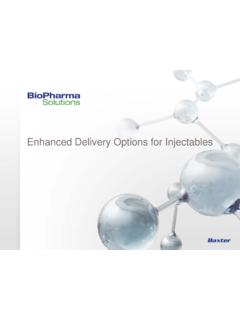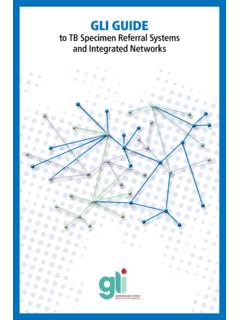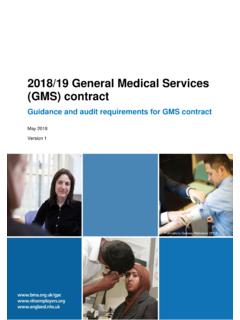Transcription of HepB vaccine rates information sheet - WHO
1 global vaccine Safety, Immunization, Vaccines and Biologicals 20, avenue Appia, Ch-1211 Geneva 27 The Vaccines Monovalent hepatitis B vaccine hepatitis B vaccines (HBV) are composed of highly purified preparations of hepatitis B "s" antigen (HBsAg). This glycoprotein is a component of the outer envelope of the hepatitis B virus, and is also found as 22-nm spheres and tubular forms in the serum of people with acute and chronic infection. Early vaccines were prepared by harvesting HBsAg from the plasma of people with chronic infection (plasma derived vaccine ) while more recent ones are obtained by expressing plasmids containing the corresponding gene in yeast or mammalian cells (recombinant DNA vaccine ).
2 An adjuvant, aluminium phosphate or aluminium hydroxide, is added to the vaccines that are also preserved with thiomersal when used in multi-dose vials. The concentration of HBsAg varies from to 40 g per dose, depending on the manufacturer (CDC, 1996; Mahoney et al., 1999). More than half a billion people have been immunized in the world since the beginning of the implementation of universal programmes, with very effective vaccine products, which are considered extremely safe. Combination hepatitis B vaccine hepatitis A and B combinations - This combines hepatitis B and A antigens in formulations that are suitable for paediatric or adult use.
3 hepatitis B combined with DTP, Hib and/or IPV - hepatitis B has been combined with acellular or whole cell pertussis antigens diphtheria, tetanus, Haemophilus influenzae type b (Hib) and/or inactivated poliomyelitis (IPV) in multiple vaccine preparations with four to six diseases diseases being prevented from a single vaccine product. Adverse events Mild adverse events In general, there are minimal reactions, such as local pain, myalgia and transient fever, mostly within 24 hours (see Table 1). Mild reactions tend to be less common in children than in adults (<10% vs.)
4 30%). Several studies have compared reactions after different vaccines (Greenberg, 1996), different concentrations of the same vaccine (Pooverawan, 1993; Tan, 1990) and different schedules (Goldfard, 1994; Giammanco, 1998). Some studies described reactions of a single vaccine (Soulie, 1991; McMahon, 1992; Leroux-Roels, 1997) or a novel adjuvant system (Thoelen, 1998). All report mild local and general reactions, lasting less than 48 hours. Severe adverse events Anaphylactic reactions - The estimated incidence of anaphylaxis among vaccine recipients is per million vaccine doses (95% CI ) (Bohkle et al.
5 , 2003). Other safety issues Despite numerous long-term studies, there is no evidence of serious adverse events that have been causally linked to hepatitis B vaccination. Several conditions that have been considered in the scientific literature are discussed below. Neurological disease - There have been a number of severe neurological adverse events reported after hepatitis B vaccines and these primarily have included Guillain-Barr syndrome and multiple sclerosis (Shaw, 1988; Herroelen, 1991; Mahassin, 1993; Trevisani, 1993; Nadler, 1993; Tartaglino, 1995, Mahoney et al.
6 , 1999). Establishing a causal relationship between these diseases and hepatitis B vaccination is difficult because these conditions are rare, have a poorly understood pathogenesis, occur in the absence of hepatitis B vaccination and the onset of symptoms maybe reported weeks to months after vaccination has occurred. Guillain Barr Syndrome (GBS) The pathogenesis of GBS is poorly understood but it seems that GBS may be triggered by infection such as flu-like illness or with Campylobacter jejuni. Rarely, GBS has been reported to follow hepatitis B infection.
7 Following the introduction of plasma-derived hepatitis B vaccine in the US, the possible association between GBS and a receipt of the first dose of vaccine was suggested (CDC, 1991). In 1991, GBS was reported at a very low rate ( per 100 000 vaccine recipients). A review of case reports of adverse events and positive re-challenge of symptoms after hepatitis B vaccination has been interpreted as suggesting that vaccination could cause or trigger GBS in certain susceptible vaccine recipients (Geier et al., 2004). However, on the basis of a careful review of all available evidence and advice from the global Advisory Committee on vaccine Safety (GACVS), WHO considers that the complete data do not indicate a causal relationship between hepatitis B vaccine and GBS (WHO, 2009).
8 Multiple sclerosis (MS) - In France and the UK concern was raised in the communities that hepatitis B immunization might be linked with new cases or flare-ups of MS or other demyelinating diseases (Duclos, 2003). GACVS considers that data from spontaneous reports and epidemiological studies do not support a causal relationship between MS and hepatitis B vaccine . (Wkly Epidem Rec, 1997 and 2004). Compared to the background rate of MS in France, which is 1 to 3 cases per 100 000 persons, the notification rate of demyelinating diseases in temporal association with hepatitis B vaccination was per 100 000 during the period from information sheet OBSERVED RATE OF vaccine REACTIONS hepatitis B vaccine June 2012 December 1994 and December 1996.
9 Observations in other countries show similar patterns to that observed in France; that is to cases of demyelinating disease per 100 000 vaccine recipients (Australia, Belgium, Canada, Germany, India, United Kingdom, United States) which corresponds to the usual background rate of disease occurrence. A number of studies have examined the association between MS and hepatitis B vaccination and the majority do not support an association (Zipp F et al., 1999, Sandovnick AD et al., 2000, Ascherio A et al., 2001,Touze et al., 2002, De Stefano et al.)
10 , 2003) including a re-analysis using a new design that compares cases only (Hocine et al., 2007). However, these findings have also been challenged. In a nested case-control study within the General Practice Research Database (GPRD) in the United Kingdom patients who had a first MS diagnosis recorded were compared with controls. The analyses include 163 cases of MS and 1,604 controls and the OR of MS for vaccination within 3 years before the index date compared to no vaccination was (95% CI , ). No increased risk of MS was associated with other vaccines which included tetanus and influenza vaccinations.














